Barcelona is a feast for the eyes. With its incredible beauty and wealth of art and architecture, Barcelona’s popularity as a tourist destination has burgeoned in recent years.
The Surrealistic city has almost gotten a little theme park-ish. The city is so crowd-pleasing that it’s often overrun by hordes of tourists and selfie sticks.
In spite of what can be horrible hordes of tourists, there are still some less-feted hidden gems. Hidden Places In Barcelona Even Locals Don’t Know About.
Casa Calvet: Early Gaudi Home
Casa Calvet is usually overlooked by those on the Gaudí trail in Barcelona. It’s not as curvy, crazy, or whimsically colorful as his more well known work. The upside? It’s largely ignored and crowd free.
But it shouldn’t be. It’s a hidden gem among the other modernist standouts in nearby Passage de Gràcia. And a visit is essential to a full understanding of Gaudí’s career and more famous UNESCO buildings in Barcelona.Built between 1898-99, Casa Calvet was commissioned by Pere Calvet, a textile manufacturer.
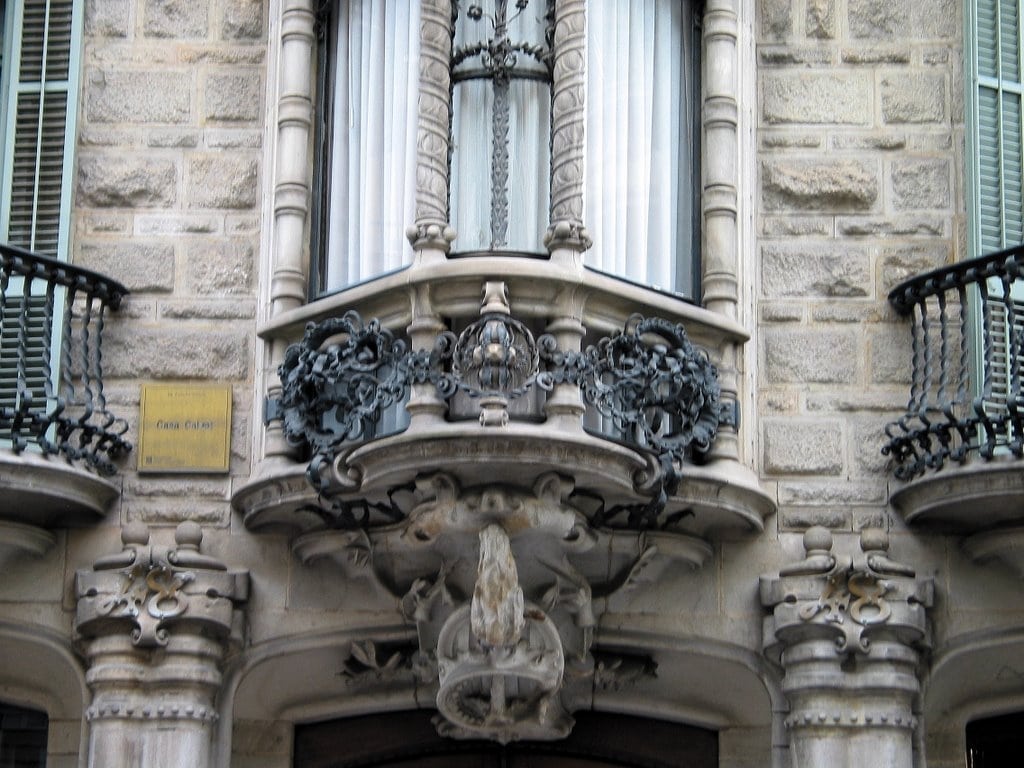
Casa Calvet was squeezed between two older buildings in a tony neighborhood.The double gabled building’s ornamentation is classic Gaudí. It has bulging and curved balconies, that presage the mask-like balconies on Casa Batlló.
The wrought iron is highly stylized and similar to La Pedrera’s twisting “seaweed” look.Gaudí incorporated many mythological and natural symbols into Casa Calvet. Among other things, the front door sports original wrought iron door knockers in the form of a Greek cross. The knocker strikes against a bed bug, in an allegory of faith crushing sin
Palau de la Música Catalana: Barcelona’s Pretty Concert Hall
Palau de la Música Catalana is a gaudy rose-covered wonderland and must see site in Barcelona. This magnificent concert hall was designed in 1905-08 by Lluis Domènech i Montaner — an architect who was just as famous as Gaudi at the time.
You have to see it to believe it. Musicians love its acoustics. Tourists love its unique design. It’s a veritable symphony of stained glass, mosaics, sculptures.
Palau de la Musica is located along a claustrophobic, densely packed street in the Gothic Quarter. Montaner countered the claustrophobia with color and levity.
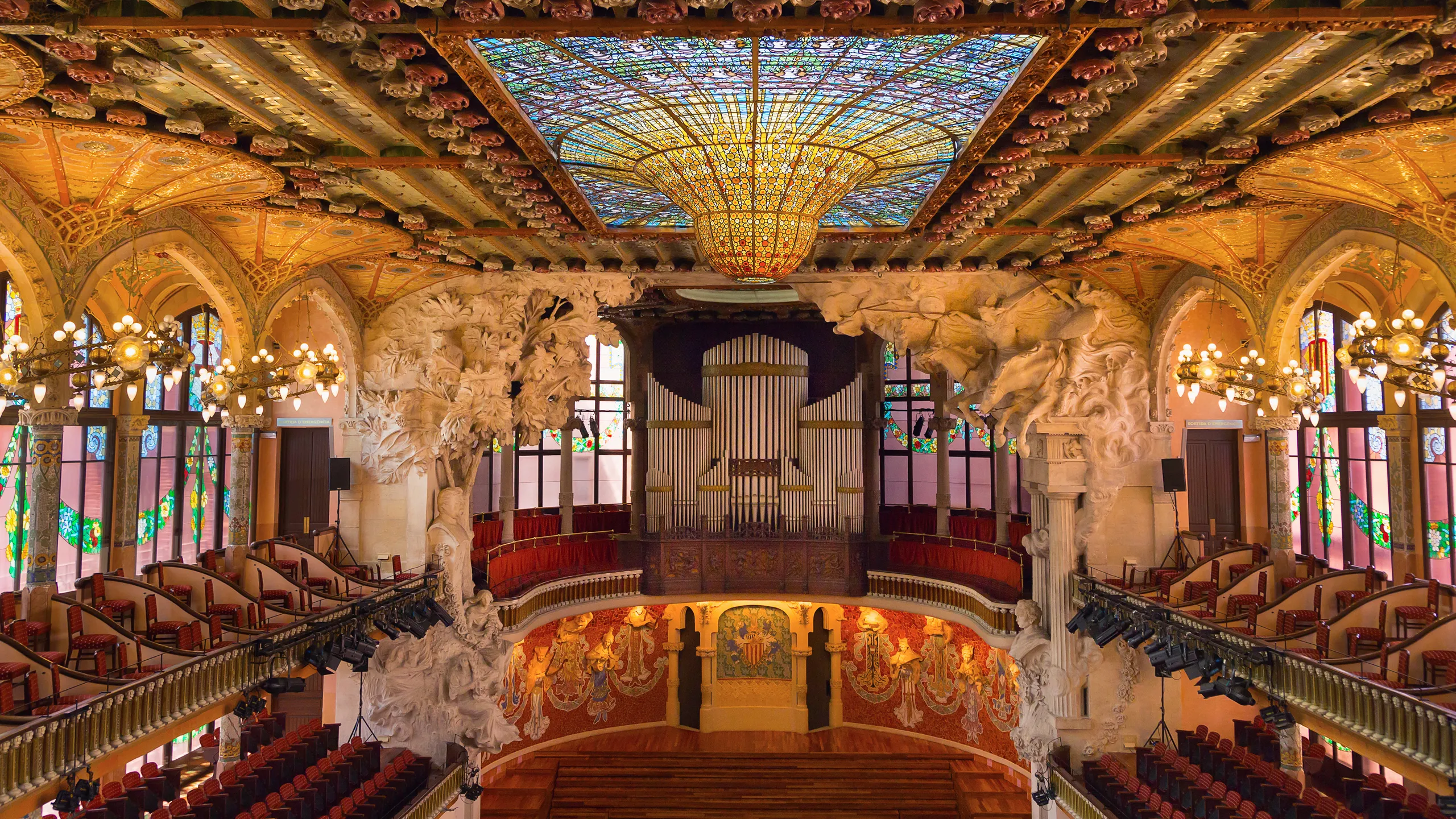
The arches and intricate mosaic columns draw your eye up to the roofline. Stained glass windows bring in the natural light.
You begin at the marble Lluís Millet Grand Staircase, named after a famous Catalan composer. As you as ascend, gaze up at the eye catching ceramic glazed ceiling.
You’ll enter a waiting area, the Lluís Millet Hall, enveloped in massive stained glass windows. Parts of the panels are clear so you can see the dramatic mosaic columns outside by Sala Millet.
The auditorium is almost overwhelming. The piece de resistance is the intricate stained glass ceiling by Antoni Rigalt.
Iron and glass chandeliers create a starry night effect. And sculptures curve up the sides of the stage, including a glowering Beethoven and Valkeries from Richard Wagner’s operas
Palau is now a UNESCO site. But it wasn’t embraced initially.
Josep Pla, a doyen of Catalan literature, condemned it as “horrible” for its theatrical excesses. Montaner himself was peeved. He skipped the opening ceremony because he hadn’t been paid.
Monasterio de Pedralbes
This 14th century Gothic-style monastery allows you to take a step back and appreciate religious art and relics in Barcelona. A sight well off the beaten track but definitely worth seeing, this is one for those looking for something to fill a warm spring afternoon, without the hustle and bustle of Las Ramblas.
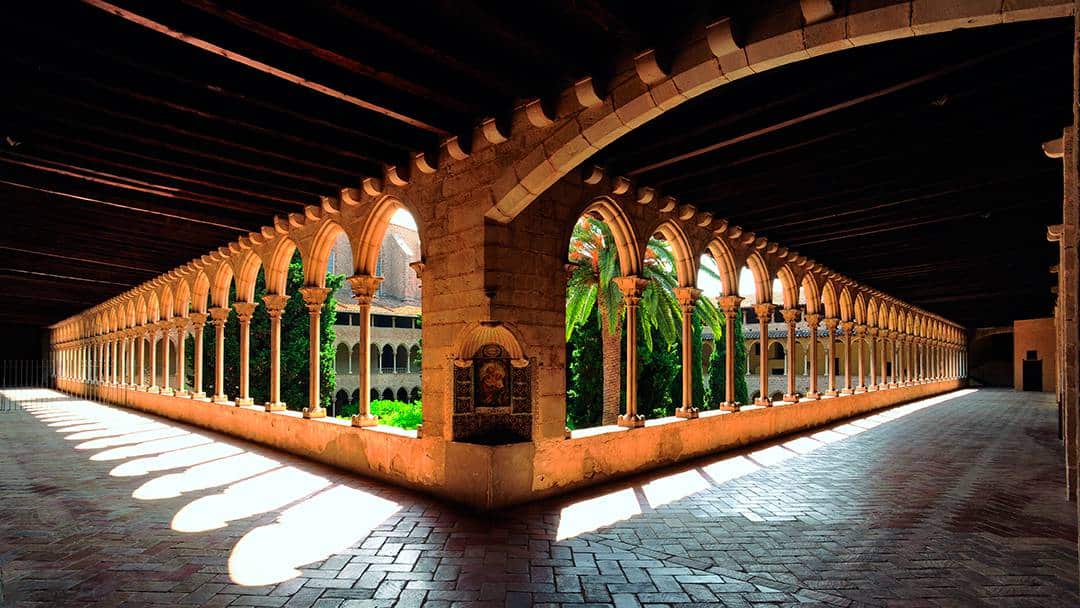
The cloister has three floors with a gorgeous garden view of palms and the renaissance fountain in the serenity of the courtyard. You won’t find a more serene place in all of Barcelona.
Bunkers del Carmel
The Bunkers del Carmel is arguably the best viewpoint of the entire of Barcelona, with a 360° panoramic view of the city.
The Bunkers are found at the top of Turó de la Rovira, in the Carmel district, to the north of the city. Locals, and those in the know-how, love to come here at sunset with some drinks and food, to sit and admire the breathtaking views.
The bunkers were built during the Spanish Civil War in 1937 and were used to defend the city against aircraft attacks from the fascists. When the Civil War ended, the guns were removed but the bunkers remained.
Due to the poverty caused by the Franco Regime, many locals used the bunkers as housing, turning into somewhat of a shanty town. No one lives there any longer, and it has become a beautiful spot to remember the sad history, but also to take in the stunning cityscape of Barcelona.
Sant Pau Recinte Modernista
Close to the St Pau Metro station (Line 5) is this wonderful collection of art nouveau buildings which comprise an old hospital plus various pavilions.It is a celebration of Cataln Modernista architecture as well as a museum.
The Modernista Sant Pau Complex was built between 1905 and 1930 and designed by Lluís Domènech i Montaner as a garden city for nursing the sick. After being used as a public hospital for a century, its newly refurbished pavilions shine again in all their splendour.
A visit to this exceptional architectural ensemble is a unique experience.
By the late 19th century, the old Hospital de la Santa Creu in Barcelona’s Raval neighbourhood needed to be relocated because it had become obsolete and too small.
The result was an ambitious project inspired by the breakthroughs in health and hygiene at the time. It is important to remember that this institution has always been associated with charitable work, welfare and the latest discoveries in healthcare.
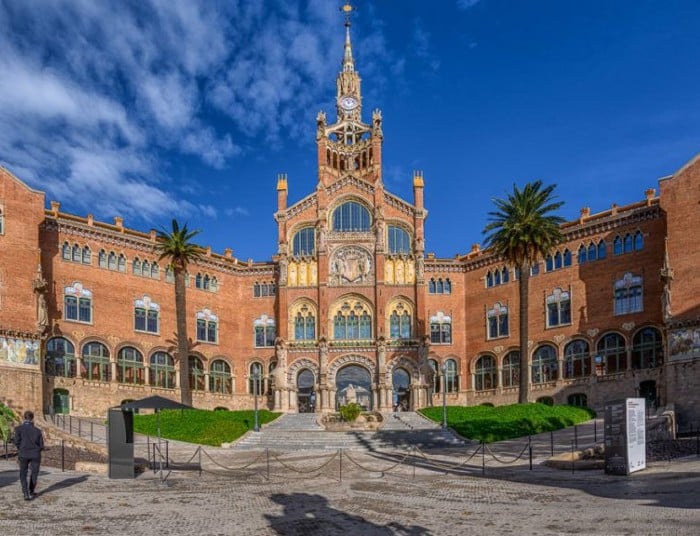
This is Europe’s foremost art-nouveau complex and an icon among Barcelona‘s dazzling array of landmarks which embodies the city’s innovative spirit. It was awarded World Heritage status by UNESCO in 1997 and now its architectural and artistic values have been brought to a wider audience with the new use of its pavilions.
The former hospital complex is now a knowledge campus and the headquarters of international organisations including the European Forest Institute, the Casa Àsia, the Global University Network for Innovation, and the United Nations University Institute on Globalization, Culture and Mobility.
A visit to this magnificent complex allows you to delve into history, art and the present day.
The exhibition space in the Sant Salvador Pavilion takes you on a journey through the history of medicine in Barcelona and one of Europe’s oldest healthcare institutions. Sant Salvador Pavilion marks the start of a recommended route around the outdoor spaces of the Art Nouveau Site that reproduce the garden city model designed in the early 20th century.
As you stroll, admire the building’s lovely exteriors. Domes, roofs, façades, sculptures and stained-glass windows are the most outstanding elements.
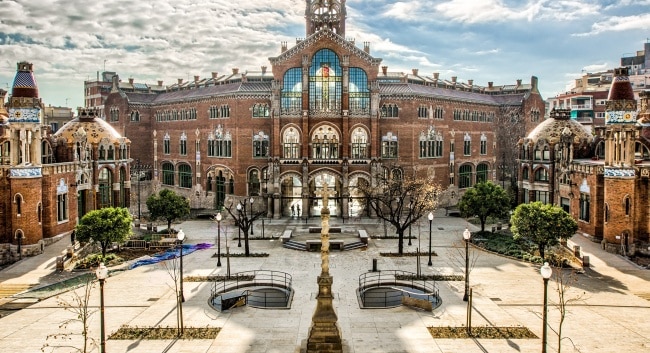
You can also enter the Sant Rafael Pavilion and see its interior exactly as it was designed at the start of the 20th century. Moreover, you can take the underground tunnels communicating the various buildings and visit the most representative heritage spaces of the Administration Pavilion.
Mirador d’Horta Swing
Located nearby to the Mirador de Mundet, but not easily accessible by public transport, is an idyllic swing that overlooks the whole of Barcelona. Step back into childhood nostalgia and take a trip up to the swing to see Barcelona from an angle that little have seen before.
There is a plaque by the tree with Barcelona’s skyline, and the words “Un lloc des d’on veure els teus somnis” which translates in English to “A place where to look to your dreams”. Let your inner child come out to play and feel the Mediterranean breeze blow out the cobwebs.
Montjuïc Cemetery
Montjuïc is home for several of the most famous museums in Spain including, the National Museum of Catalan Art, the Museum of Archaeology and the Ethnology Museum. And with so many interesting sights to see around, it’s no surprise that only a handful of people visit Montjuic Cemetery.
This is actually the biggest cemetery in Barcelona. Here, you can find the graves of some of the city’s most famous historical figures.
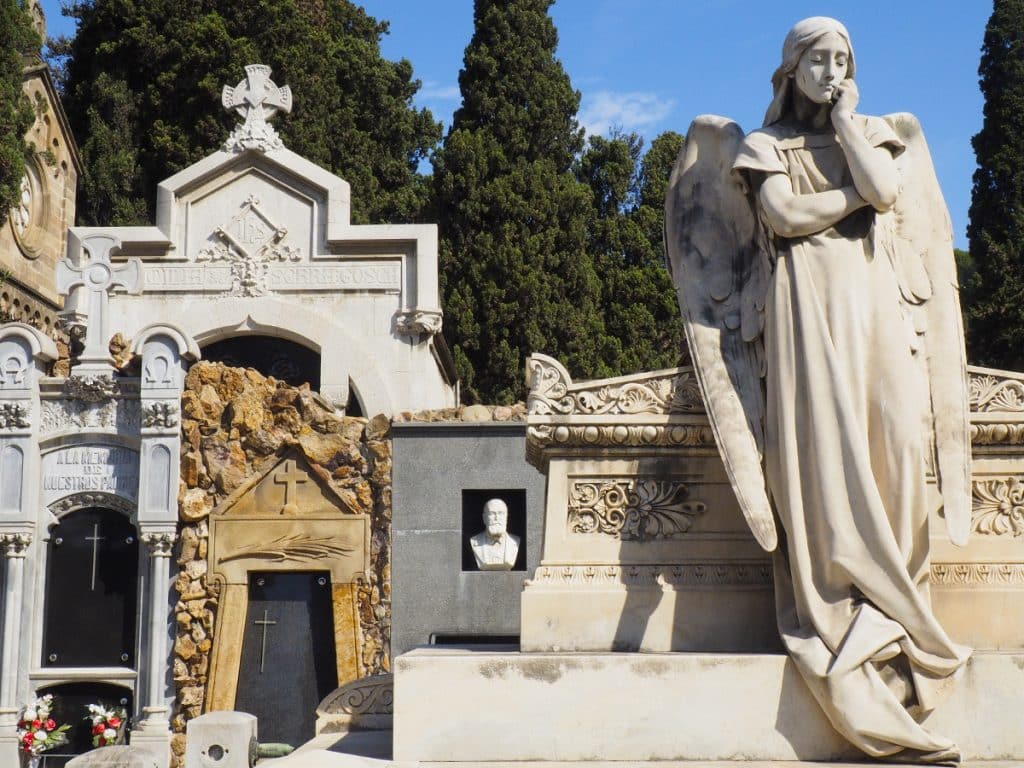
The most fascinating part about the cemetery are the modernist quirky statues that decorate some of the graves. If you’re looking for some unusual things to do in Barcelona, this is one place you really shouldn’t miss visiting
The remains of the Temple of Augustus
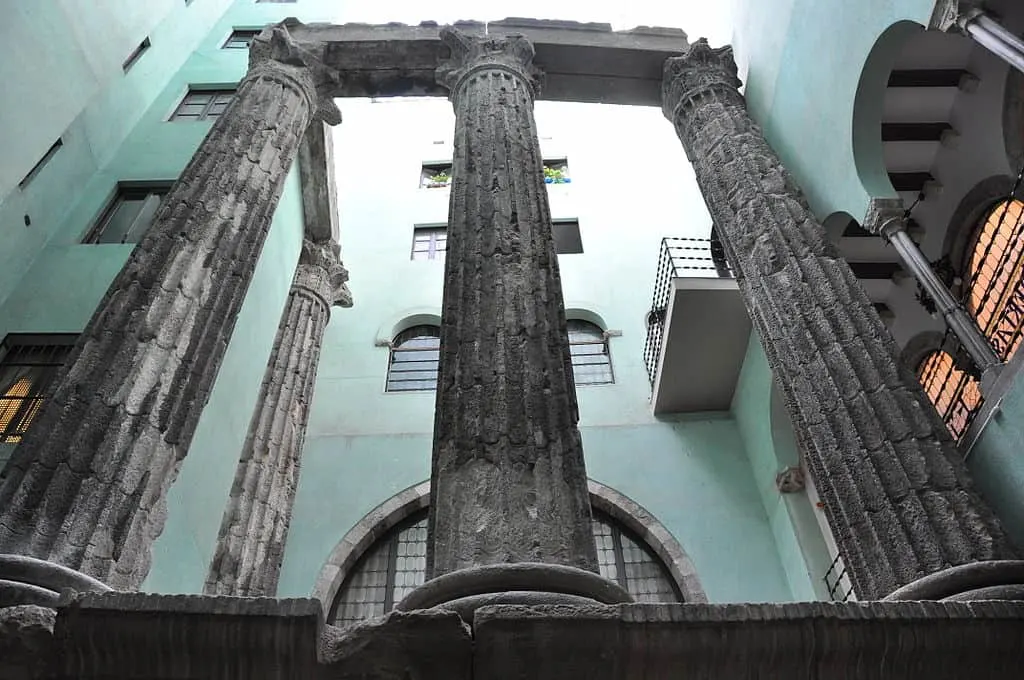
by J Irigoyen CC by SA 3.0
The Gothic Quarter is one of the most beautiful historic parts of Barcelona that attracts a lot of visitors but also hides a lot of hidden gems. One such example are the remains of the Temple of Augustus; a 2,000-years-old Roman temple that even historians don’t know a lot about. According to estimates, the temple was demolished during the persecution of pagans under the Christian emperors in the 4th century.
The remnants that consist of four columns that measure 9 meters high were discovered in the late 19th century. According to estimates, they are at least 2,000 years old
Arús Library
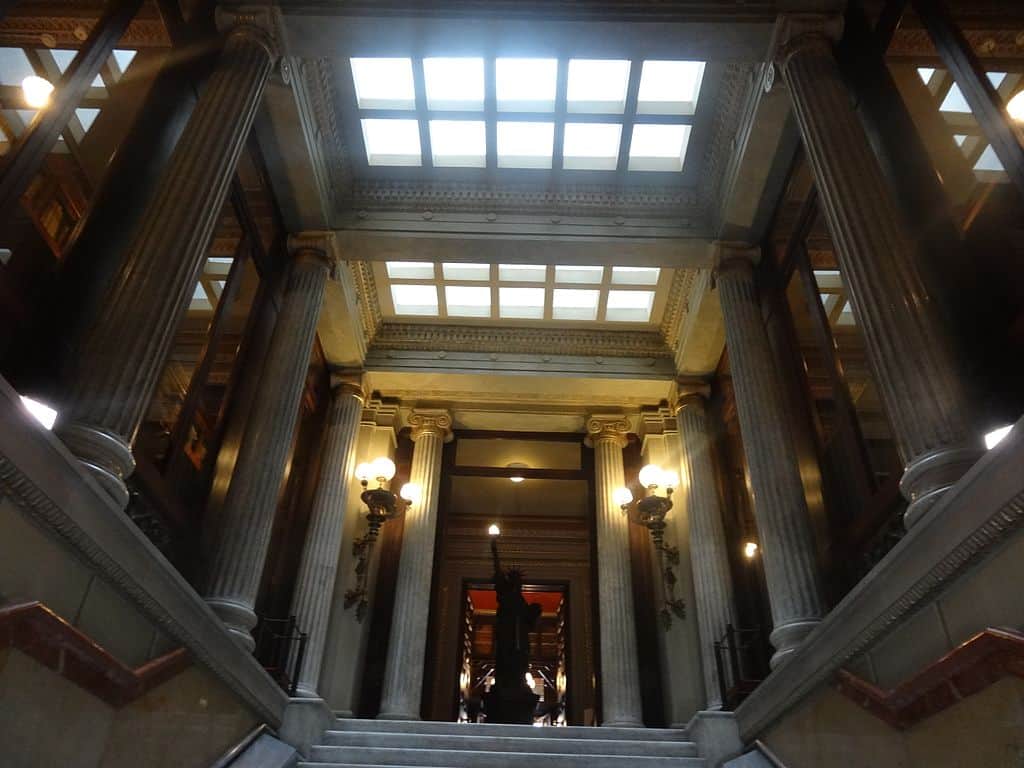 Photo by Jordiferrer CC by SA 4.0
Photo by Jordiferrer CC by SA 4.0
Arus Public Library is one of the most beautiful libraries in Europe. The library has been around since 1895 and houses more than 80,000 books and manuscripts. This sure sounds impressive but for Barcelona, Arus is much more than just a library. It’s a place where all significant social movements in Barcelona of the late 19th and 20th centuries were shaped.
If you can, take a guided tour and learn about the history of the library and its most prominent visitors; it’s definitely worth it.



